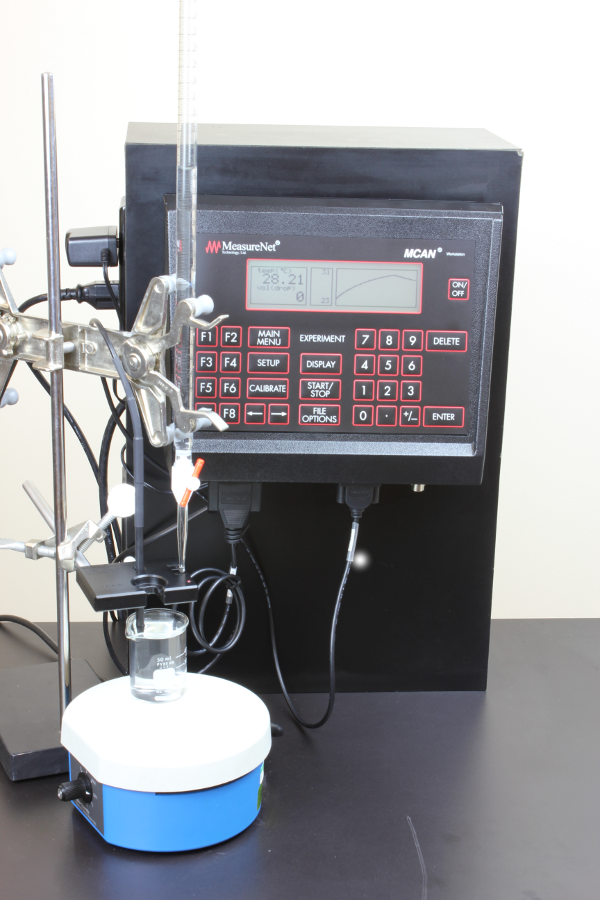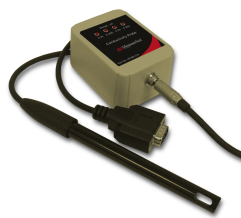
The modernization of a universities General Chemistry laboratory program can be a daunting and yet necessary task. This is especially true when you have 2000+ students taking General Chemistry every year. The University of Tennessee, Knoxville decided it was time to modernize their General Chemistry Lab Program for them to remain competitive. They knew that Electronic Data Collection Technology needed part of this process, and needed to be integrated into the labs. I am happy to say The University of Tennessee, Knoxville decided MeasureNet's Electronic Data Collection System was the technology selected in the redesign of their General Chemistry Laboratory Program.
“The laboratory makeover not only benefits the first-year students, but will help improve their preparation and success as they go on to take upper-level chemistry courses, “
Al Hazari, Director of Undergraduate Laboratories.
%20Systems-resized-601.png)
Department of Chemistry and Biochemistry, Miami University, Oxford, Ohio 45056, United States
J. Chem. Educ., 2013, 90 (4), pp 500–505
DOI: 10.1021/ed300340x
Publication Date (Web): March 15, 2013
Copyright © 2013 The American Chemical Society and Division of Chemical Education, Inc.
Abstract
The large class sizes of first-year chemistry labs makes it challenging to provide students with hands-on access to instrumentation because the number of students typically far exceeds the number of research-grade instruments available to collect data. Multifunctional chemical analysis (MCA) systems provide a viable alternative for large-scale instruction while supporting a hands-on approach to more advanced instrumentation. This study describes how the capabilities of MCA systems are extended to introduce liquid chromatography (LC) and flow injection analysis (FIA) in undergraduate laboratories. A semi-micro plastic cuvette with a Teflon tubing insert is fashioned as the flow cell for a MCA absorbance–fluorescence detector. Two MCA systems, Vernier and MeasureNet, are used in two unique experiments demonstrating the detection of salicylate in aspirin tablets by FIA and the LC separation of a mixture of riboflavin and fluorescein. Both instruments, composed of a syringe pump, T-injection valve, and the MCA detector, operated in the kinetic mode, are rugged and inexpensive permitting student construction, if desired.
The folks here at MeasureNet have been hard at work integrating new probes into our system and creating new experiments. In this blog entry we'll be introducing the following new experiments and probes:
- Thermometric Titrations
- Conductivity Probe & Experiment Options
- Colorimetric Titration Hardware
Thermometric Titrations
The newest software integrates the drop counter and temperature probe and now has the capability to conduct experiments with Temperature vs Drops. This allows users to conduct Thermometric Titrations.

Conductivity Probe & Experiment Options
MeasureNet now offers a 4 range high resolution conductivity probe. MeasureNet provides users the ability to conduct experiments with Conductivity vs Time and use the drop counter for Conductivity vs Volume for Conductometric Titrations.

Colorimetric Titration Hardware
MeasureNet systems now have the ability to conduct colorimetric, Fluorometric, turbidometric and chemiluminescent titration experiments. When ordering colorimeters, customers can specify if they would like them customized for photometric titrations. The kit includes a colorimeter, a base stand, a pump with power supply, and custom-made flow cell that pair with the MeasureNet colorimeter and drop counter.
The folks here at MeasureNet have been hard at work integrating new probes into our system and creating new experiments. In this blog entry we'll be introducing the following new experiments and probes:
- Dual Probe Experiments (Pressure, Temperature & Voltgage)
- Thermocouple Temperature Probe
- Melting point Experiment
Dual Probe Experiments
MeasureNet now has the ability to collect data from 2 of the same probe if using the voltage, pressure, or temperature probes. New experiment options have been added to each probe's menu to allow dual probe collection. In order to use the dual probe option, customers will need the MeasureNet dual probe adaptor (pictured below).

Thermocouple Temperature Probe
MeasureNet also offers a thermocouple type J temperature probe now for applications that fall outside the range of our standard temperature probe. The new thermocouple probe has a temperature range from -180C to +475C.

Mel-Temp Switch & Experiment
Along with the thermocouple probe, MeasureNet now offers a solution that will make Melt Temp experiments easier. During a Mel-Temp experiment, you can use the Melt Temp Switch to keep track of a small range of temperatures when your compound nears melting temperature. You can then use print code 400 to print an overall temperature graph along with a graph that focuses on the range where the sample started to melt.

Make sure to keep a lookout for the next set of probes and experiments. We still have more to show.

The newest MeasureNet software introduces Dual UV/VIS Spectroscopy. Customers now have the ability to use two networked spectrometers simultaneously.
Customers will need to ensure they have the following order to use two NetSpec spectrometers on the same MeasureNet MCAN (Multifunctional Chemical Analysis Network):
- MeasureNet Lab PC Software v 9.0.0 and above
- MeasureNet Unity Controller Software v 3.0.0 and above
- MeasureNet Unity Controller equipped with a dual port network card.
- 2 NetSpec UV/VIS Spectrometers
All new MeasureNet Controllers sold since January 2012 have had a dual MeasureNet network port included by default. If you're not sure which type of network card is installed in your controller, you can easily figure it out by looking at the back of it.
Single network

Dual network

If you do not have a Dual network card, you can contact MeasureNet to discuss upgrade options for your Unity Controller.
One UV/VIS spectrometer will reside on your existing network, and the second spectrometer will hook up to the port with the black cover over it. Once connected, you can use both spectrometers in the same fashion as you would a single Netspec UV/VIS Spectrometer.
The Lab PC Software now has status indicators for both spectrometers along with settings menu options for each NetSpec Spectrometer.